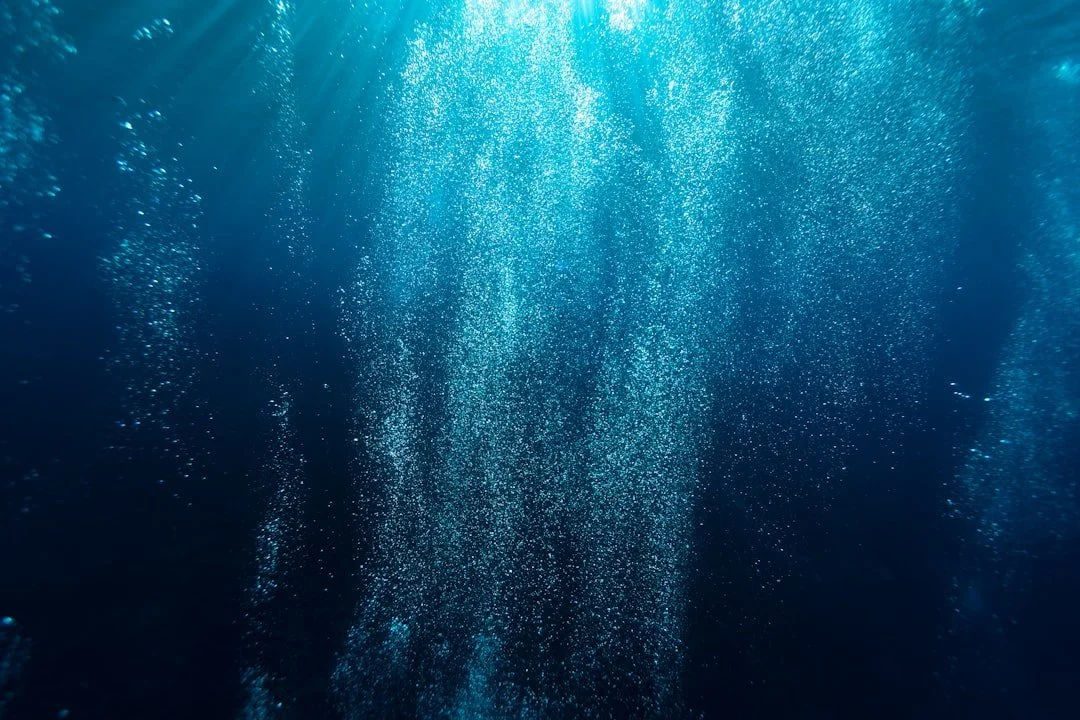Our work is built on more than two decades of scientific research.
The ocean absorbs and stores vast amounts of carbon, but that capacity is under threat.
The ocean plays a crucial role in regulating Earth’s climate by absorbing and storing large amounts of carbon dioxide — but that natural capacity is under threat.
This natural process, known as carbon sequestration, relies heavily on tiny ocean plants called phytoplankton. Phytoplankton absorb carbon dioxide through photosynthesis, forming the base of ocean food webs and playing a key role in carbon cycling.
When they die, or are consumed by zooplankton, some of that carbon sinks to deeper layers of the ocean — removing it from the atmosphere for decades, centuries, or even longer.
But rising temperatures, pollution, and nutrient imbalances are reducing phytoplankton in many regions, weakening the ocean’s ability to absorb carbon and support marine life.
Restoring a Disrupted Natural Cycle
-
Phytoplankton are microscopic organisms that play a major role in the global carbon cycle.
Through photosynthesis, they absorb CO₂ from the atmosphere. When they die or are eaten, that carbon is transferred into deeper ocean layers, where the carbon can be stored for 1000 years or more.
-
In many parts of the ocean, phytoplankton growth is limited by a lack of key nutrients — especially nitrogen and iron.
When these nutrients are missing from surface waters, the biological carbon pump weakens, weakening the ocean’s ability to draw down CO₂ and support marine life.
-
The Ocean Nourishment process addresses this problem by carefully restoring limiting nutrients to depleted regions.
This stimulates phytoplankton growth and helps regenerate ocean ecosystems — while restoring carbon drawdown to depleted regions.
Scientific Foundations
The Ocean Nourishment concept was first developed in the late 1990s by Professor Ian Jones, building on decades of oceanographic research into carbon cycling and nutrient limitation.
Since then, the concept has been explored through peer-reviewed publications, scientific modelling, and international policy discussions.
Key studies have examined how a shortage of nitrogen and other macronutrients limits phytoplankton growth in low-productivity regions of the ocean.
Modelling has shown that restoring these nutrients could significantly enhance the ocean’s capacity to absorb and store carbon.
This body of work forms the foundation for ONC’s current research and development, including our biostimulant, Phytoplus, and the measurement protocols currently under development to validate its impact.
1997–2004
Early research by Professor Ian Jones exploring nutrient limitations and ocean productivity.2004–2010
Foundational publications on nitrogen fertilisation and carbon sequestration potential.2011–2017
Modelling studies and scientific papers quantifying the global capacity for carbon removal through the Ocean Nourishment process.2018–present
Ongoing work to refine modelling, assess ecological impacts, and develop measurement frameworks.
-
ACE CRC (2008). Position analysis: Ocean fertilisation: Science and policy issues. ACE CRC, Hobart, May 2008.
Harrison, DP (2013) "A method for estimating the cost to sequester carbon dioxide by delivering iron to the ocean". International Journal of Global Warming, vol. 5, pp. 231-254.
Harrison, DP (2017). Global negative emissions capacity of ocean macronutrient fertilisation. Environmental Research Letters, Volume 12, Number 3, Negative Emission Scenarios and Technologies.
Intergovernmental Oceanographic Commission (2008). Information document IOC/inf-1247. Report on the IMO London Convention Scientific Group meeting on ocean fertilization, June 2008
Jones, ISF (2004). The enhancement of marine productivity for climate stabilisation and food security. Chapter in Handbook of Microalgal Culture, ed A. Richmond, Blackwell, Oxford.
Jones ISF and Young HE (1997). Engineering a large sustainable world fishery. Journal of Environmental Conservation, vol. 24, p.99-104.
Jones ISF (2011). Contrasting micro- and macro- nutrient nourishment of the ocean. Marine Ecology Progress Series, vol. 425, p.281-29.
Jones, ISF and M Renilson (2011) "Using ocean nourishment to increase fishing effectiveness". Journal of Ocean Technology, vol. 6, pp. 30-37.
Judd, B, DP Harrison and ISF Jones (2008) "Engineering ocean nourishment". Proceedings of the World Congress of Engineering, vol. 2, pp. 1315-1319, ISBN 978-988-17012-3-7.
Lampitt RS, Achterberg EP, Anderson TR, Hughes JA, Iglesias-Rodriguez MD, Kelly-Gerreyn BA, Lucas M, Popova EE, Sanders R, Shepherd JG, Smythe- Wright D & Yool A (2008). Ocean fertilization: a potential means of geoengineering?. Philosophical Transaction of the Royal Society A, vol. 366, no. 1882, p.3919–3945.
Lawrence MW, (2014). Efficiency of carbon sequestration by added reactive nitrogen in ocean fertilisation. International Journal of Global Warming, Volume 6, No. 1.
Matear, RJ and B Elliott (2004) "Enhancement of oceanic uptake of anthropogenic CO2 by macro-nutrient fertilization". Journal of Geophysical Research, vol. 109, C04001, pp. 14. doi: 10.1029/2000JC000321.
Murray, BC, et al (2010). Payments for blue carbon - Potential for protecting threatened coastal habitats. Nicholas Institute for Environmental Policy Solutions, Duke University.
Rehdanz K, Tola RSJ, Wetzeld P (2006). Ocean carbon sinks and international climate policy. Elsevier Energy Policy, vol. 34, p.3516-3526.
Royal Society (2009). Geoengineering the climate: Science, governance and uncertainty. Report, September 2009.
Schmidhuber J and Tubiello FN (2007). Global food security under climate change. Proceedings of the National Academy of Sciences, vol. 104, no. 50, p.19707.
Shoji, K and ISF Jones (2001) "The costing of carbon credits from ocean nourishment plants". Science of the Total Environment, vol. 277, pp. 27-31.
UNEP (2009). Blue Carbon – The role of healthy oceans in binding carbon. UNEP Rapid Response Assessment
Wallace DWR, et al (2010). Ocean fertilization. A scientific summary for policy makers. IOC/ UNESCO, Paris (IOC/BRO/2010/2).
Ware DM and Thompson RE (2005). Bottom-up ecosystem trophic dynamics determine fish production in the NE Pacific. Science, vol. 308, no. 5726, p.1280-1284. DOI:10.1126/science. 1109049


